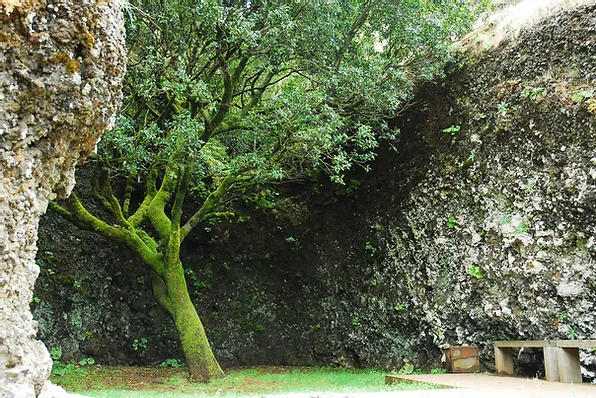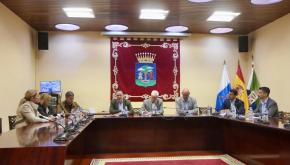Despite having always been surrounded by an aura of mystery and legend, the Canaries were already known in ancient times as "Las Aortunadas". The descriptions used to be exaggerated and imprecise. Some even tended to associate them with the remains of Atlantis.
The origin of the name "El Hierro", the westernmost, is not known for sure, but it could be due to a derivation of the ancient language that designated the island with the name of "hero" or "Esero" or there are other theories that could look for the origin in derivations of the customs of ancient sailors at the time of designating different geographical features with opposite names.
In the second century of our era, Ptolemy considered the "Zero Meridian" as the one that passes through the western end of the island, that is, through the "End of the Ancient World". That is how things remained until at the end of the 19th century it was displaced by the one passing through Greenwich.
The primitive settlers of El Hierro were the bimbapes or bimbaches, from the nearby African continent. A peaceful people that had a complex social structure, despite not having metals and living without contact with other cultures in their environment.
They lived in caves or in simple dry stone buildings, in balance with the island environment, from which they obtained sufficient resources for their subsistence (agriculture, grazing, hunting, fishing and gathering).
The bimbapes have bequeathed us numerous petroglyphs, which can be admired in various parts of the island and have not yet been deciphered. The most extensive and significant are Los Letreros de El Julan, a place where you can also see the remains of the old meeting place called "Tagoror". They have also been discovered in this Cultural Park, declared an Asset of Cultural Interest with the category of Archaeological Zone for its innumerable rock manifestations, burials in caves, finding corpses and offerings such as domestic utensils, primitive tools and some foods.
The origin of the Bimbaches, like that of the entire primitive population of the Archipelago, is located in North Africa. The archaeological zone of El Julan, has been proposed by the Government of the Canary Islands to be a World Heritage Site by Unesco.
The conquest
El Hierro was taken by Jean de Bethencourt at the beginning of the 15th century, within the framework of the Norman conquest of the Canarian Archipelago that subjected the islands of Lanzarote, Fuerteventura and El Hierro.
The bimbapes offered little resistance and the island was soon colonized with peasants from Europe who soon mixed with the original population. Since then, a stately system has been established that prevailed until the 19th century.
Some of the island's inhabitants were forced to emigrate throughout history, due to limited farmland and long droughts. The largest recent emigration was due to the drought of the mid-20th century. Many Herreños emigrated to Tenerife or Gran Canaria. Sailing ships also left from El Hierro to South America, clandestinely, to countries such as Cuba, Argentina and, mostly, Venezuela, where there is still a large colony of El Hierro and descendants.
In 1912 the town councils of Valverde and La Frontera were created. With the creation of the Island Councils, the island acquired self-government. On September 15, 2007, the El Pinar City Council was officially constituted.
After the Transition, the history of El Hierro has been marked by its fight against the obstacles of double insularity, its demand for the improvement of its transport services abroad and the achievement of important infrastructure works such as the island hospital, the expansion and improvement of the Port of La Estaca and the construction of the Los Roquillos tunnel.
The island has also opted for a sustainable development model (officially approved in 1997 by the Cabildo de El Hierro), which led it to reject at the time projects such as the Military Monitoring Radar in Malpaso or the satellite shuttle that INTA projected for the island. This commitment to a sustainable model has led it to be declared in its entirety by UNESCO World Biosphere Reserve (2000) and World Geopark (2015).


